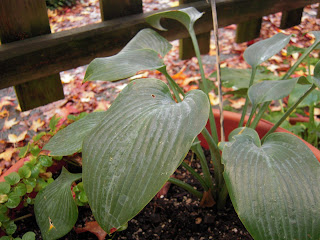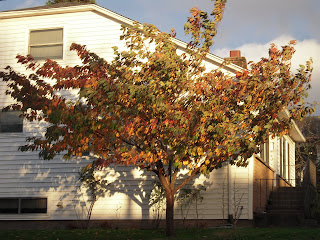Soil
The noun
The word soil is originally derived from the Latin solum (meaning cultivated soil or the topmost layer of earth Oxford Latin Dictionary 4).
The Ingredients
Minerals (sand, silt, clay)
Organic matter (decaying plants and animals)
Living organisms (insects, fungi and smaller organisms)
Air
Water
Minerals:Minerals help provide structure in the soil. If the soil is healthy, its minerals will assist with drainage and supporting the roots of plants. The three primary minerals in soil are sand, silt and clay.
Sand is the largest particle and is great for drainage. Silt is a smaller particle and both sand and silt are often made of quartz. Quartz takes a very long time to break down so it will not need to be replenished if there is enough in your soil already; it does not, however, provide many nutrients to the soil.
Clay is different from its sand and silt companions. It is nutrient rich and although it is very fine, when compacted, it can make drainage extremely difficult.
Most soils have a (somewhat) balanced combination of these three minerals. The ideal balance is called loam. It consists of 40% sand 40% silt and 20% clay.
Homemade Soil Structure Tests:
There are several homemade tests you can do to check your mineral balance and drainage quality:
The scoop and squeeze: go out in your yard and scoop up some soil and squeeze it--it should break apart but not too easily (too much sand) and it should feel moist but not slippery (too much clay). Try this in a few spots around your yard to get a good sample.
The famous jar test: fill a mason jar with 1/3 soil and 2/3 water, put a lid on and shake it up for a while. Then leave the jar to let the particles settle (this will take about a day). Once it's settled, the stuff floating on top is your organic matter, followed (hopefully) by some water, then three lines (in order from top to bottom) clay, silt, and sand (which drops to the bottom because it's so heavy).
The wait 'til it rains and watch test: Just wait until there's a heavy rain and then go out and check your soil--the time it takes the water to drain will help determine if the soil has too much clay or too much sand.
The rain simulation and watch test: Same as above but instead of waiting for rain, dig a hole in your soil and fill in with water, then watch what happens.
If you've determined that you are lacking in any mineral, the first solution is to add organic matter (it is a master problem solver (more on this below)). If your soil is too sandy, this step (repeated if necessary) should be all you need. If your soil has too much clay, try the organic matter and then you can try adding coarse sand or gypsum (which helps to break down the clay). Remember to measure the area in which you are adding sand or gypsum in order to apply the appropriate amount and avoid making the problem worse!
Organic Matter:
Organic matter refers to the dead plant and animal material found in soil. When the material is broken down or partially decomposed it becomes humus. The organic material provides nutrients for the soil, and as we learned above, it adds substance when there is too much sand and helps to break down clay when clay becomes compacted. It makes up a very small amount of the soil volume but is essential to a balanced soil structure. Organic matter breaks down much more quickly than minerals so it must be replenished often.
When extra organic matter needs to be added to the soil (usually every spring) you can use compost, shredded leaves, or finely shredded bark.
Living Organisms:
There are lots of critters that benefit from your soil and are also a benefit to your soil. There is an entire ecosystem that aids in the breaking down of organic material. Most bugs are a good sign in your garden because they are working to help bring your plants nutrients. It's important to know which ones are not helpful though to prevent plant damage (but that discussion is for another day).
Water and Air:
While the mineral particles, organic matter and living organisms make up about half of the soil's volume, air pockets and water make up the other half. Soil's water/air ratio changes constantly, depending on how much water is percolating into the soil at a given time. The air pockets create space for the water and also make room for roots to easily grow and search for nutrients. These air pockets (sometimes water pockets) are essential to the spreading of water through your soil so it is really important that you refrain from stepping on your soil too often, compressing these important spaces.
What Science Says:
A surefire way to check your soil's balance and health is to send off a soil test. Just package up a scoop (a representative sample from your yard) and send it to a well trusted laboratory. These tests are very specific and can really help you pinpoint the needs of your soil. It is recommended that you check your soil annually (or at least every once in a while!). The testing ranges in price (depending on the test) but a simple soil fertility test is usually affordable. The tests can give general information (which can tell you if you need to add a certain element or adjust the pH) or check for dangerous material in your soil (heavy metals). UMass Amherst, Oregon State University and Penn State are a few of the trusted lab test providers. Some cities do complimentary testing if you are just checking to make sure the soil is safe and free of heavy metals. The scientific option is just another way to help understand the needs of your soil.
Credit must be given to my local libraries for lending me the following:
Soil Science Simplified (4th ed) by M.I. Harpstead, T.J. Sauer and W.F. Bennett (Iowa State U. Press)
Stuart Robertson's Tips on Organic Gardening by Stuart Robertson (Vehiclue Press)
Your Garden Soil by Henry Maddox (David and Charles Ltd)
...three fantastic books!










































